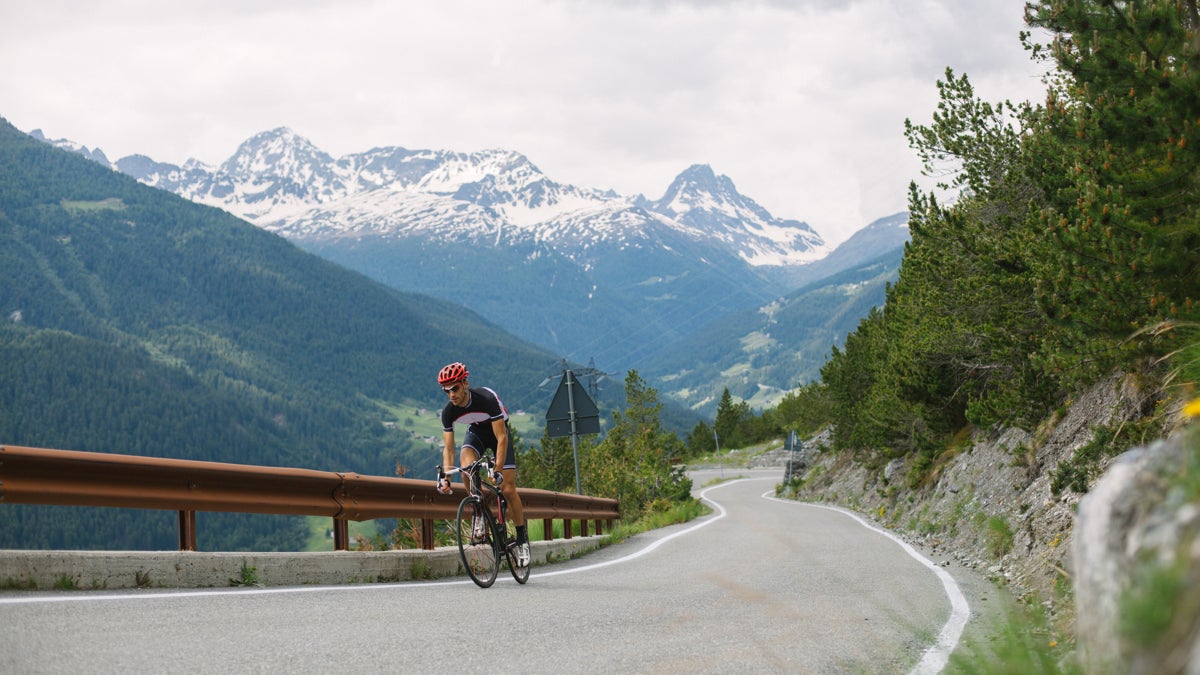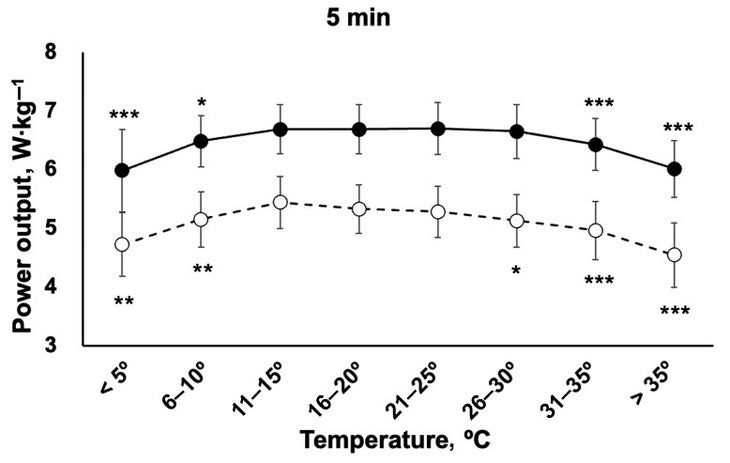
One thing is generally missing in translation from the lab to the serious world—a point that is captured in the notion of “ecological validity,” the extent to which the circumstances in an experiment match those people you’d face in the wild. A person way around this challenge is to skip the lab solely and look for for designs in obviously developing facts. Cyclists, who obtain in depth information about just about every pedal stroke with their electric power meters, make especially very good topics for this sort of analysis, as illustrated by a new study in the International Journal of Sporting activities Physiology and General performance.
A crew of Spanish scientists coordinated by David Barranco-Gil of the Universidad Europea de Madrid pooled 8 several years of knowledge from 74 world-class cyclists (48 adult males and 26 females) and asked a uncomplicated question: how does air temperature influence overall performance? The solutions present some practical insights about the discrepancies in between cycling and jogging, and about the distinctions (or lack thereof) among how adult males and girls react to heat and chilly.
To evaluate functionality, the scientists initial divided the power information into temperature ranges in 5-degree-Celsius increments from beneath 5 degrees Celsius (41 levels Fahrenheit) to higher than 35 levels Celsius (95 levels Fahrenheit), using the built-in temperature sensors on the riders’ bicycle computers. In every temperature selection, they then searched for the best average electric power manufactured about four different durations: 5 seconds, 30 seconds, 5 minutes, and 20 minutes. This is the strategy the exact same researchers made use of to appraise the outcomes of altitude on efficiency in an additional current analyze, and it has the gain of together with race knowledge from large activities like the Tour de France, exactly where the cyclists are presumably digging as deep as they can.
Here’s an illustration of the facts for the five-moment attempts, with the men’s details demonstrated by black circles and girls by white circles:

As you’d be expecting, the ability outputs drop a little bit when the temperature receives as well higher. There are a bunch of distinctive physiological factors for this, which include changes in heart and anxious system operate as you get hotter and quite possibly dehydrated.
Effectiveness also drops when it gets way too chilly. This also can make intuitive feeling, and you can come up with plausible physiological factors like modifications in muscle properties as temperatures fall. Shockingly, while, past laboratory experiments have generated combined final results about irrespective of whether chilly temperatures hurt stamina efficiency. In apply, it is not obvious no matter whether the fall-off in the new research is because of to some basic physiological limitation, or simply just demonstrates the truth that it is seriously unpleasant to try to cycle up a mountain when the temperatures are hovering close to freezing. Either way, the professionals trip slower when it’s cold.
When you aggregate the results, you find that efficiency is maximized more than a broad array amongst about 50 and 77 levels Fahrenheit. (The upper threshold of 77 levels isn’t as exact as it seems: 77 degrees Fahrenheit is 25 degrees Celsius, just one of the 5-degree-Celsius increments.) Assess that to a research I wrote about past slide that aggregated a century’s value of race final results and meteorological information to come across the optimal temperature for operating. The summary in that circumstance was a sweet location of 50 to 63.5 levels Fahrenheit.
Why would cyclists be able to handle greater temperatures much better than runners? Almost certainly simply because cyclists driving outside crank out their possess cooling wind—a factor that was notably disregarded in lots of lab-dependent experiments of biking and heat tolerance.
Overall, there was no statistically major change in between male and woman cyclists. When each and every information established was analyzed separately, on the other hand, there had been distinctions. The best temperature array for guys only was 50 to 86 levels Fahrenheit, although for women only it was 41 to 77 levels Fahrenheit. This may show that women of all ages had been better capable to tolerate cool temperatures without having slowing down, although adult men dealt with warm temperatures improved. All over again, you can occur up with plausible physiological explanations for why this must be genuine, related to system surface area place, dimension dissimilarities, the insulative attributes of entire body excess fat, sweat gland distribution, and so on. But to be truthful, you could argue it both of those approaches. For now, the data is just a trace that there could be anything exciting for potential research, not evidence a person way or the other.
For the file, if you are organizing a trip in hot or chilly problems and want to estimate the handicap, here’s how a great deal electric power output lowered from peak stages:
- Under 41 levels Fahrenheit: 9 to 17 % (males) 10 to 18 per cent (ladies)
- 41 to 50 levels Fahrenheit: 2 to 7 percent (guys) no substantial distinction (gals)
- 77 to 86 degrees Fahrenheit: no considerable change (men) 3 to 6 % (women)
- 86 to 95 levels Fahrenheit: 3 to 5 per cent (adult males) 5 to 7 percent (girls)
- Earlier mentioned 95 degrees Fahrenheit: 9 to 13 per cent (adult males) 14 to 16 per cent (women of all ages)
The ranges (e.g. 9 to 17 %) reveal the ability drop-offs in the four diverse durations analyzed, concerning 5 seconds and 20 minutes. Overall, the designs are extremely equivalent for the distinctive durations, although it looks to me as nevertheless the fall-off in sprinting is more pronounced in chilly circumstances.
A ultimate position to be aware: the assessment right here considers only air temperature. In truth, the consequences of weather conditions on endurance functionality also incorporate humidity, solar radiation, and wind pace. Which is most likely a single of the motives the sweet location is so large: amazing times experience Ok if it’s quiet and sunny, heat days are not so negative if it’s dry and overcast. If you held all individuals other elements consistent, I suspect there would be a narrower vary of air temperatures that increase efficiency. Even now, my general takeaway from these final results is that it has to be quite darn incredibly hot or cold prior to I can use the temperature as an excuse for a lousy general performance.
Hat suggestion to Chris Yates for added research. For more Sweat Science, join me on Twitter and Fb, signal up for the e mail newsletter, and test out my guide Endure: Brain, Human body, and the Curiously Elastic Limitations of Human Efficiency.
The submit Why Cyclists Can Deal with Warmth Much better Than Runners appeared initially on Outside On the web.

More Stories
Stay Sharp with Hot Health-News Alerts
Transform Your Routine with Health-News
Spark Your Day with Health-News Updates